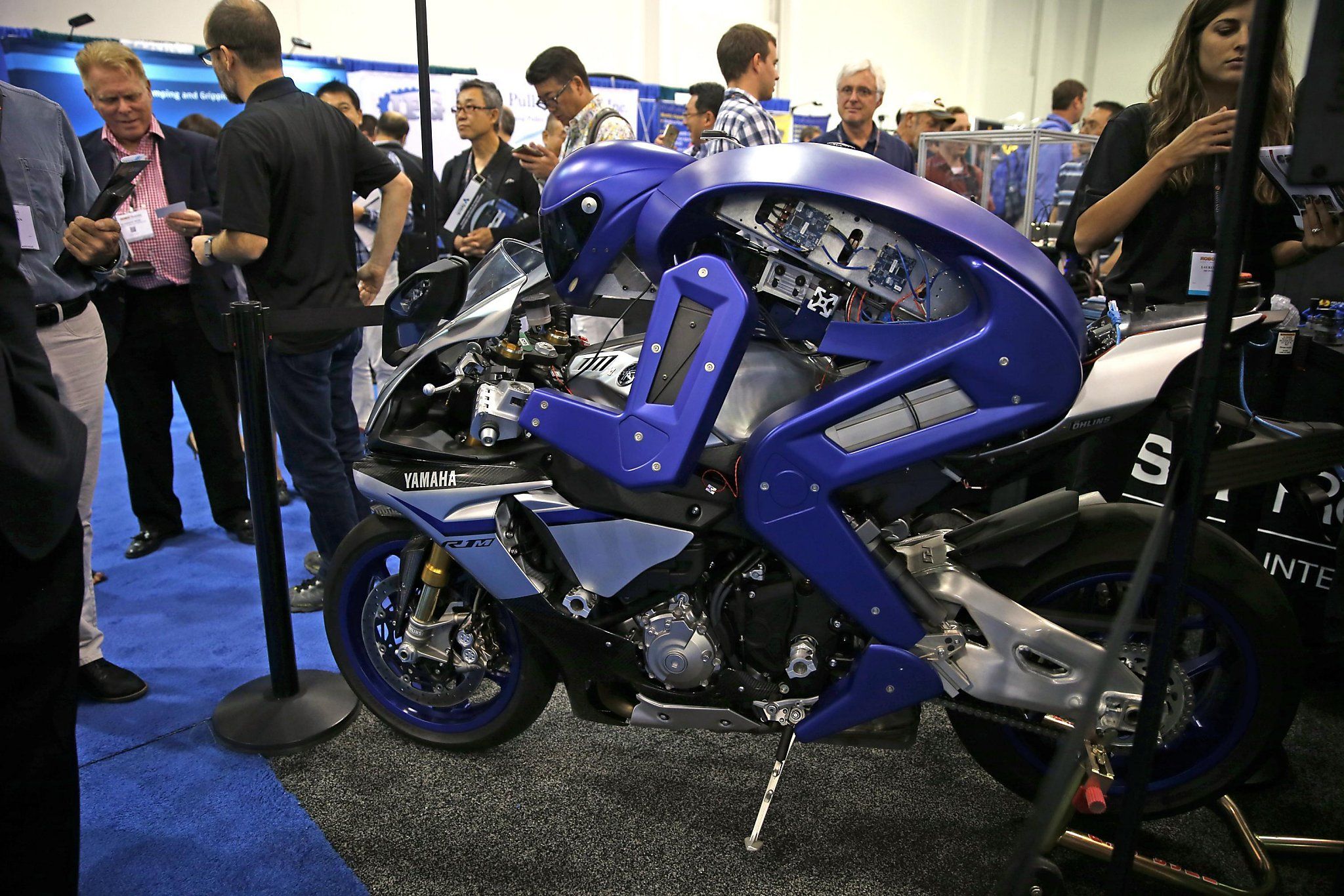Made from fiber that’s over 200 times thinner than a human hair.



Cool new story in the San Francisco Chronicle about the robotics conference. I gave a speech at it yesterday.
At the two-day RoboBusiness Conference, about 2,000 people were serenaded with lullabies and Disney tunes, including “Let It Go” from the hit film “Frozen,” by a human-like robot designed to comfort senior citizens and autistic children.
And next to a man-size robot that can drive a motorcycle 190 mph around a race track, a half-dozen ant-size robots quickly scurried about a miniature factory floor.
“In five years, could you imagine what this conference is going to look like?” Transhumanist Party presidential candidate Zoltan Istvan asked the crowd. “There are going to be 8-foot robots walking all around us, talking to us, some of them maybe being smarter than us.”
The 12th annual conference, which wrapped up Thursday, illustrated how the focus of robotics is shifting from industrial uses to consumer products. That’s especially true at a time when drones, self-driving cars and police robots that carry bombs are making news.

Hmmm; like the graphic reminds of one of my posts.
In Brief.
A team of researchers at The Australian National University (ANU) may have found another work-around to bring us closer to quantum computing: The physicists have managed to find a new way to stop light.
Light was trapped by shining infrared lasers into ultra-cold atomic vapor. While the atoms absorbed some photons, a large amount were left in a frozen state in the atomic cloud — enhancing photon interaction with atoms or other photons.


Nice article; however, not sure if the author is aware Los Alamos already has a quantum net as well as some Europe banks have the capabilities and 4 months ago it was announced that a joint effort by various countries from Europe, Asia, etc. have come together to re-engineer the Net infrastructure with QC technology…
Maybe the quantum will giveth what the quantum taketh away… at least when it comes to secure transmissions.
There’s been much speculation that emerging quantum computers will become capable of breaking advanced public key cryptography systems, such as 2048-bit RSA. This might leave encrypted data transmissions exposed to anyone who happens to own such a quantum computer.
According to a recent report by the Global Risk Institute (GRI):

A Northwestern Engineering research team has developed a 3D printable ink that produces a synthetic bone implant that rapidly induces bone regeneration and growth. This hyperelastic “bone” material, whose shape can be easily customized, one day could be especially useful for the treatment of bone defects in children.
Bone implantation surgery is never an easy process, but it is particularly painful and complicated for children. With both adults and children, often times bone is harvested from elsewhere in the body to replace the missing bone, which can lead to other complications and pain. Metallic implants are sometimes used, but this is not a permanent fix for growing children.
“Adults have more options when it comes to implants,” said Ramille N. Shah, who led the research. “Pediatric patients do not. If you give them a permanent implant, you have to do more surgeries in the future as they grow. They might face years of difficulty.”

Seems like we’ve been waiting forever for the big showdown between Team USA and Japan. We’re seemingly no closer at the moment, but at least the team at MegaBots can offer a bit of good old-fashioned destruction to tide us over before the massive machines go toe-to-toe.
In the premier of its new web series (the trailer for which was shown off at Disrupt the other week), the team behind the fighting robot startup league go to town on their own robot, the $200,000 Mk. II.
In order to stress test the six-ton bot’s protective casing, the team shoots it with its own gun and gives it several whacks with a wrecking ball. At the risk of spoiling the seven-and-a-half minute long video, it turns out it’s really tough to knock over a 15-foot-tall fighting robot.

Monitoring blood-glucose levels and injecting insulin to keep them in a safe range is a never-ending headache for sufferers of type 1 diabetes. A number of research projects have made promising steps recently to promise easier ways of doing things, and now this type of convenience is set to move out of the lab and into the real-world. For the first time, the US Food and Drug Administration (FDA) has approved a so-called artificial pancreas designed to both monitor and inject insulin automatically, requiring minimal input from the user.
In a healthy person, beta cells in the pancreas secrete vital insulin, which in turn regulates blood-sugar levels. But for sufferers of type 1 diabetes, this process breaks down along the way, requiring them to administer finger-prick blood tests to keep tabs on their insulin levels and inject the hormone as required.
For years, scientists have been exploring better ways to keep the condition in check. These have included implanting beta cells, tracking glucose levels through contact lenses and ways insulin can be delivered via a capsule rather than a needle. But perhaps the most attractive solution is what is known as a closed-loop system, which seeks to automate both monitoring and administration of insulin to dramatically reduce the burden on the user.

Researchers led by NASA’s former chief technologist are hoping to launch a satellite carrying water as the source of its fuel.
The team from Cornell University, guided by Mason Peck, want their device to become the first shoebox-sized ‘CubeSat’ to orbit the Moon, while demonstrating the potential of water as a source of spacecraft fuel.
It’s a safe, stable substance that’s relatively common even in space, but could also find greater use here on Earth as we search for alternatives to fossil fuels.